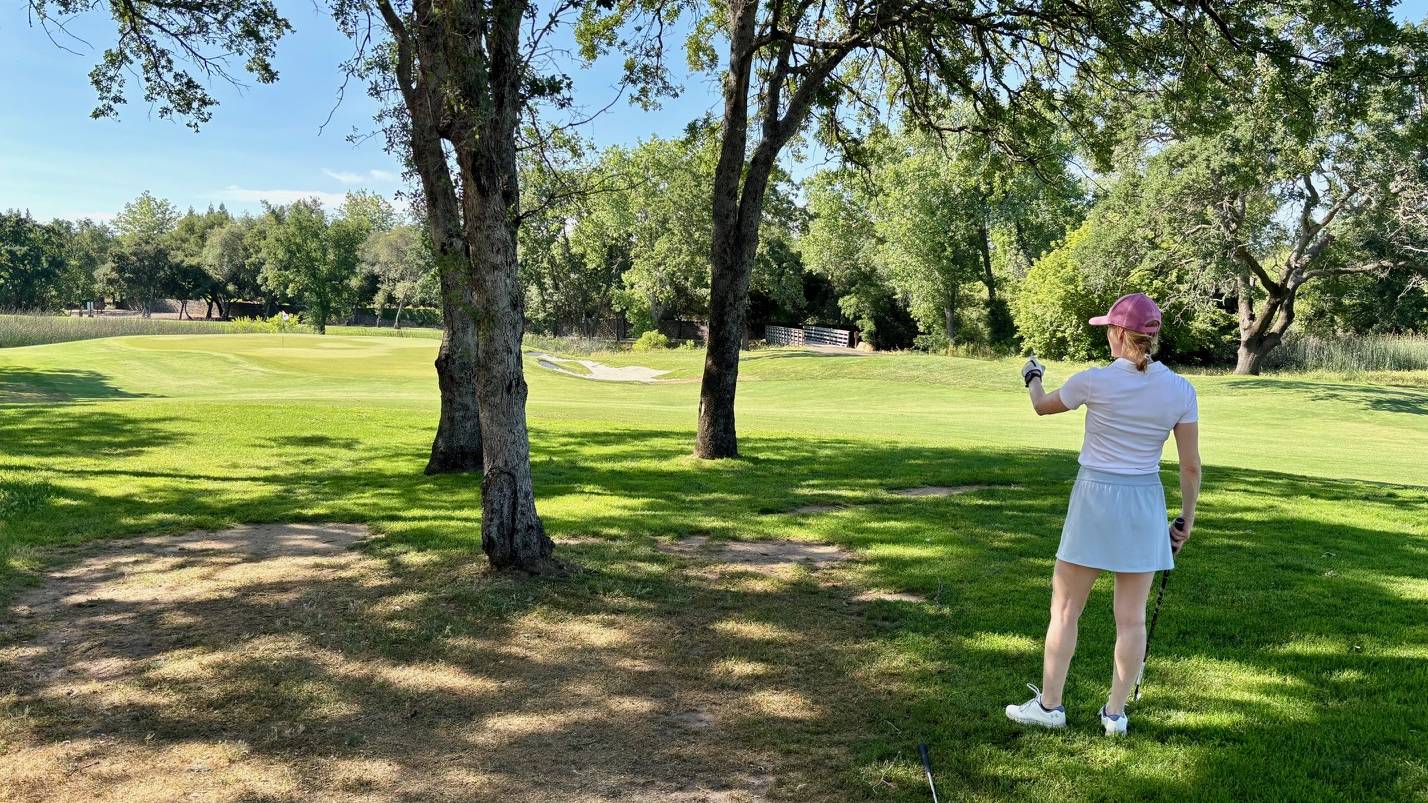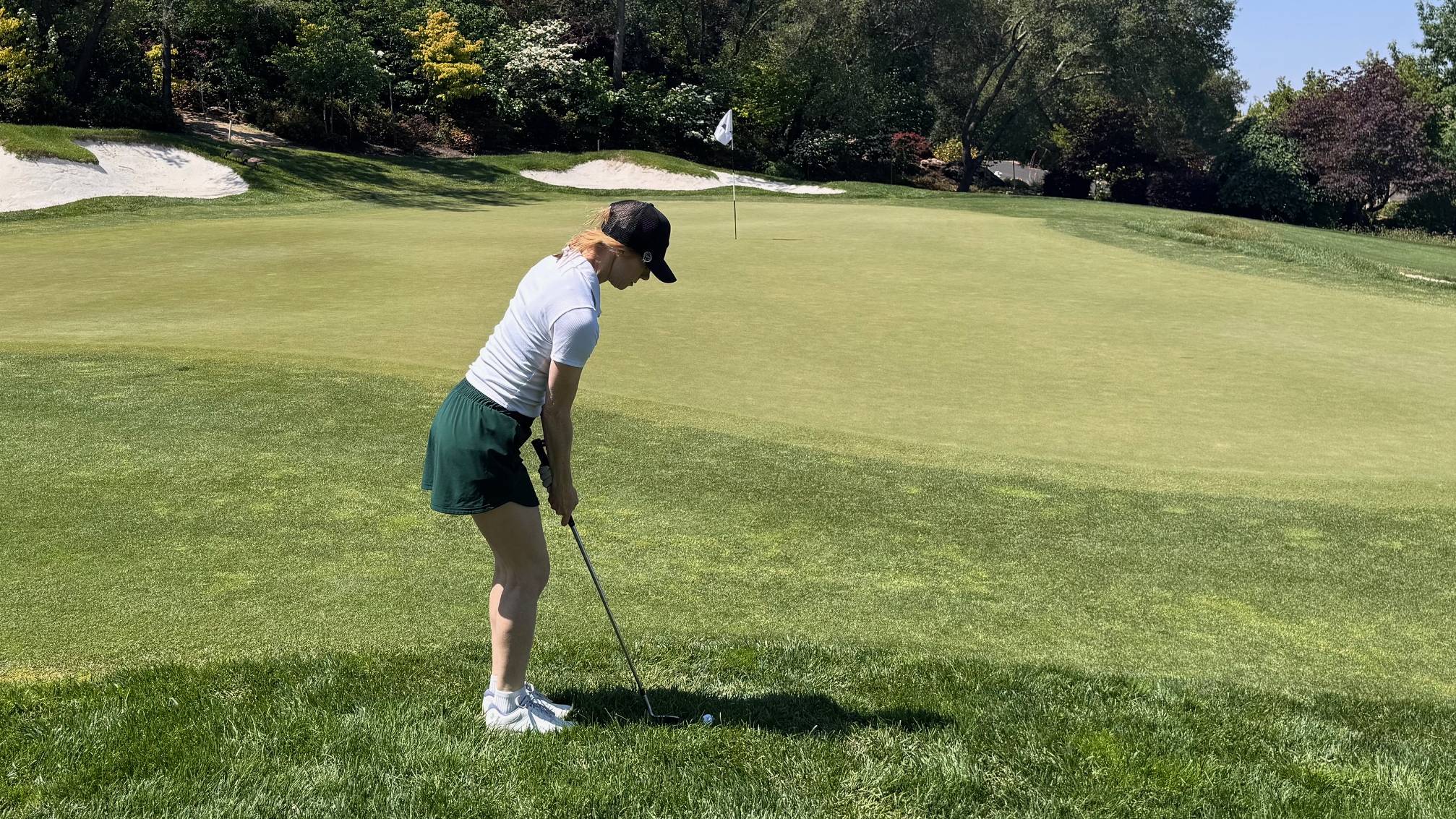
When you’re a beginner and someone tells you to avoid the sand on the right, it’s almost like speaking another language. Do they realize that just hitting the ball in the air is a win? While thinking about my game at this level was once unrealistic, now that I’m a couple of years in and have become more consistent, I have space to consider how different approaches to shots can save strokes.
Course management is like critical thinking on the golf course: figuring out where to aim, how to control your misses, and playing it safe when you need to be conservative. You can get pretty creative out there, which makes golf so much fun – and leads to lower scores.
Here are five steps I’ve taken that have helped me think more strategically before I play each shot.
Angling My Drive
Hitting to certain areas of the fairway sets me up for an easier second shot, and a simple way to do that is adjusting where I stand on the tee box. Teeing the ball up toward the right side of the box naturally aims me left and the opposite is true on the left side of the tee box.
When I mishit my drive it typically veers to the right, so I’ve started teeing the ball up toward the right side. Without changing anything about my swing, just aiming left, even if my drive drifts right, I’m giving it a better shot at landing somewhere on the fairway.

Making a Safe Club Selection for My Second Shot
How frustrating to hit a fantastic drive and then top your second shot. So, why risk it? Right now, I’m more comfortable with my irons than my woods, so, instead of potentially hitting a wild shot with a 3-wood, I’ve been playing it safe with a club I can count on. It may not always reach the green, but it’ll make significant progress down the fairway and leave me with a short pitch or chip and a chance for par or bogey.

Not Always Aiming at the Flag
If the pin is tucked to the right and surrounded by sand traps, but there’s a wide open green next to it, then it’s safer for me to aim to the center of the green, instead of trying to get the ball super close to the pin, mishitting, and landing in the sand.
Punching The Ball Back Onto The Fairway
I used to struggle getting out of the rough, and it would often ruin the entire hole because I’d get stuck. But I spent time practicing punching out with a few different clubs. Now, it doesn’t blow up my hole if my drive or second shot ends up in the thicker grass. My goal is not to hit the most amazing shot ever, but to hit a decent, conservative punch back into the fairway for my next shot.

Being Flexible Around The Green
I love chipping. It might be my favorite part of golf, but sometimes it’s the smarter decision to putt, depending on my lie and where the pin is. When I walk out to my ball, I usually have three clubs in mind: my pitching wedge, my 56 degree wedge, and my putter. Whichever club will safely get me onto the green is the right choice. I don’t want to end up chipping twice.

Most of these course management strategies are about trying to avoid big misses, or being able to recover from them. It’s a weird way to look at the golf course, but I understand that much of this game is about figuring out how to get out of tricky situations. Hopefully some of the strategies that have helped me work around those not so ideal shots will get you thinking about ways to start strategizing during your round.







